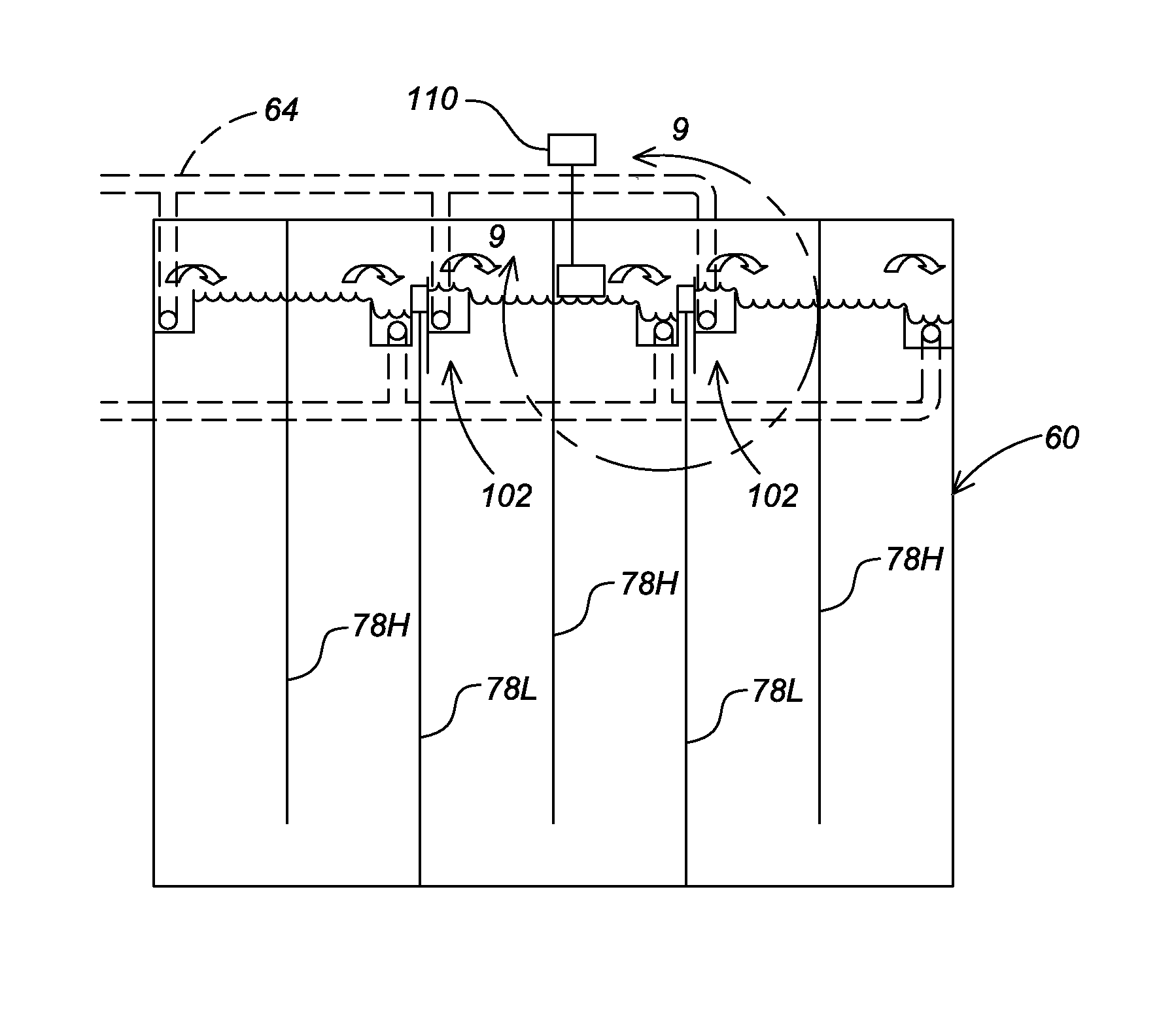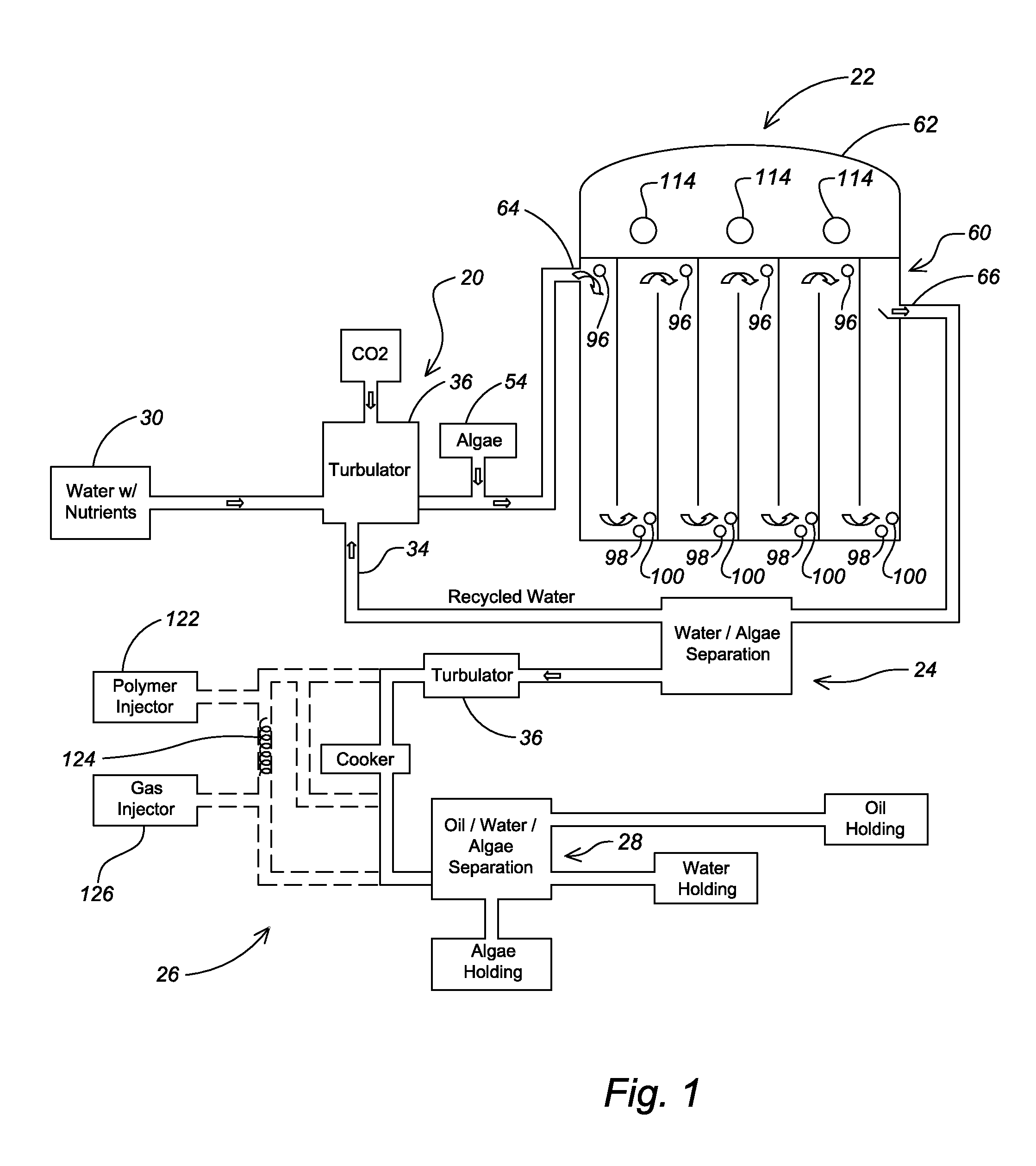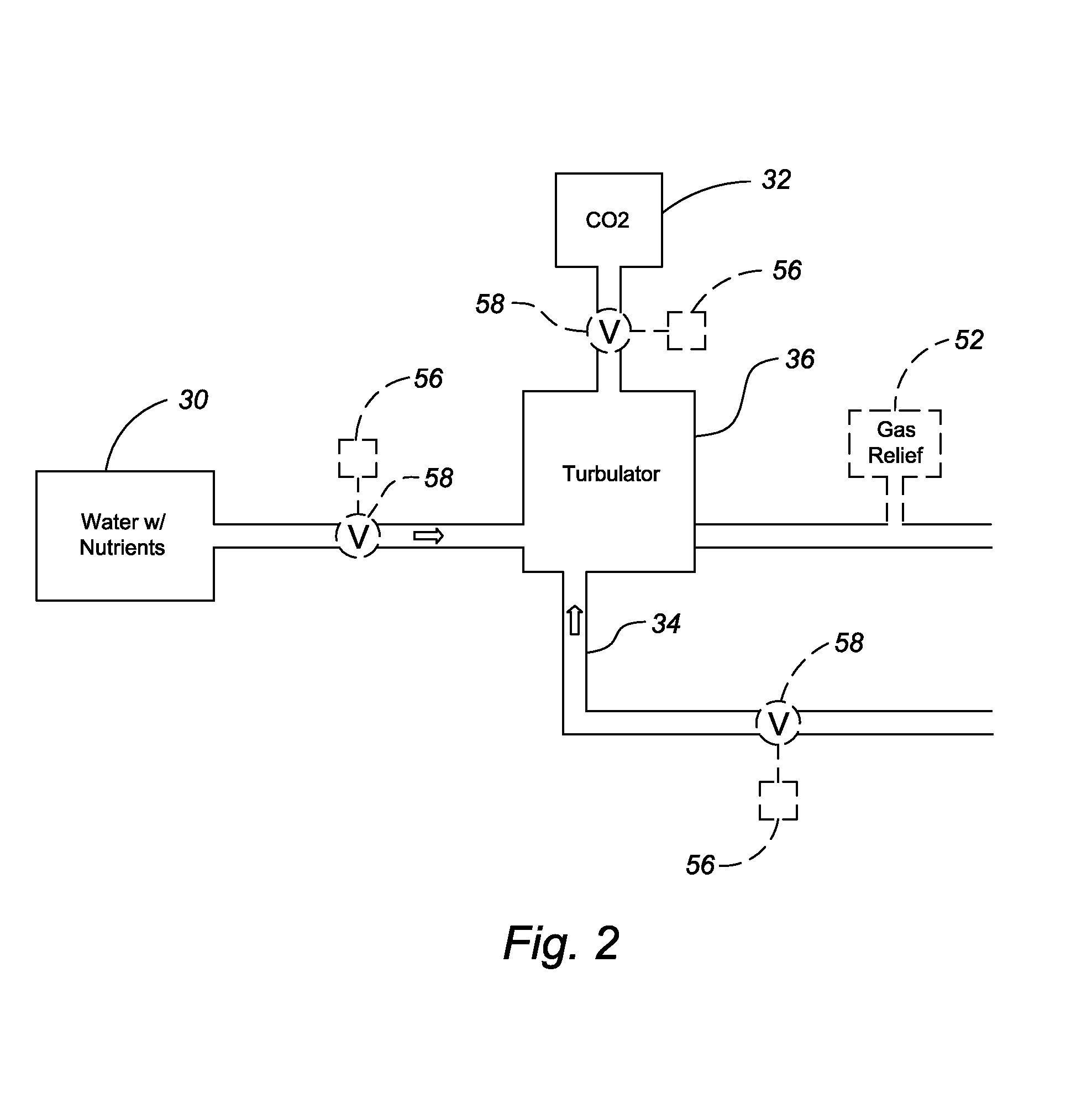System for the production and harvesting of algae
a technology for algae and harvesting system, applied in the field of comprehensive system for algae production and harvesting, can solve the problems of large amount of energy required for stirring, vast amount of land required for shallow ponds, and inability to maintain algae culture of high purity and quality
- Summary
- Abstract
- Description
- Claims
- Application Information
AI Technical Summary
Benefits of technology
Problems solved by technology
Method used
Image
Examples
Embodiment Construction
[0034]Referring to the drawings more particularly by reference character, FIG. 1 is a schematic flow diagram of a system for the production and harvesting of algae. In major part, the system includes:
[0035](1) a first section 20 for forming an algae growth media;
[0036](2) a photobioreactor 22 in which algae form an algae slurry;
[0037](3) a separation section 24 in which water is extracted from the algae slurry to provide spent media which is reconditioned into reconditioned water for recycle and an algae sludge;
[0038](4) a pretreatment section 26 in which the cells in the algae sludge are broken up; and,
[0039](5) a section 28 in which pretreated algae sludge is separated into oil, water and algae fractions.
[0040]In first section 20, as shown in FIG. 2, a source of water 30, carbon dioxide 32 and reconditioned water 34 are mixed in a turbulator 36. Turning then to FIG. 3, turbulator 36 includes a mixing chamber 38 with interleaved stationary discs 40 and rotating discs 42. Rotating d...
PUM
 Login to View More
Login to View More Abstract
Description
Claims
Application Information
 Login to View More
Login to View More - R&D
- Intellectual Property
- Life Sciences
- Materials
- Tech Scout
- Unparalleled Data Quality
- Higher Quality Content
- 60% Fewer Hallucinations
Browse by: Latest US Patents, China's latest patents, Technical Efficacy Thesaurus, Application Domain, Technology Topic, Popular Technical Reports.
© 2025 PatSnap. All rights reserved.Legal|Privacy policy|Modern Slavery Act Transparency Statement|Sitemap|About US| Contact US: help@patsnap.com



